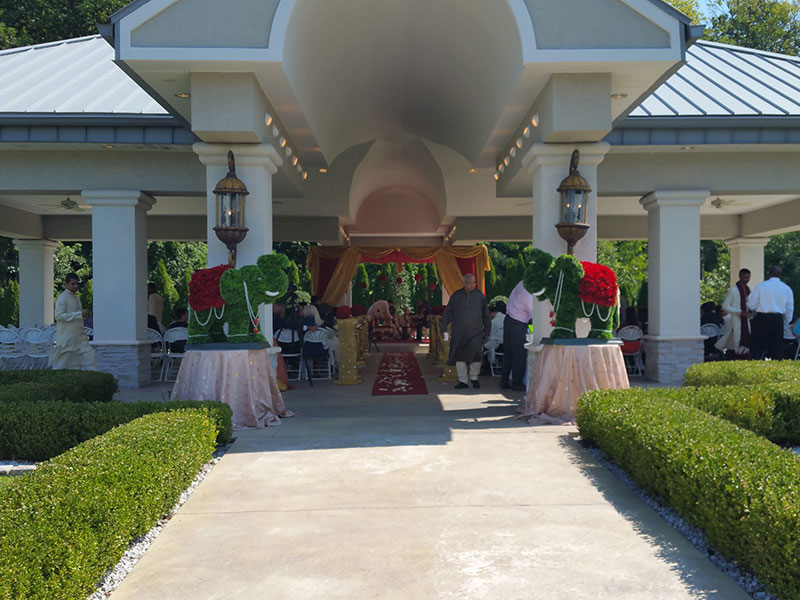Culture is a vital part of any wedding ceremony. If you or your husband- or bride-to-be are of Indian descent and looking to celebrate a traditional Christian or Hindu Indian wedding, Celebrations can help orchestrate a stunning event!
Hindu Ceremonies
Hinduism is one of the oldest religions in the world. As such, many of its traditions have been lost over time, but one that has remained strong is the wedding ceremony. A sacred rite in the Hindu religion, marriage centers around the bride, of course, but there’s also a focus on the coming together of two families. Some key elements to a Hindu wedding include the:
- Mandap. The canopy where a Hindu wedding takes place.
- Mendhi. The henna designs that cover the brides hands and feet to ensure a successful marriage.
- Vara Yatra. The groom and his bridal party.
- The Vedas. These are spiritual scriptures that are the heart of Indian culture.
- Kanyadan. The offering up of the bride, which involves the bride and groom washing their feet to purify themselves for their new life.
- Hastamilap. The tying together of the bride and groom’s hands while the priests recites holy verses.
- Agni. The holy fire the bride and groom sit in front of during the wedding ceremony.
- Saptapadi. 7 vows the bride and groom take to seal their marriage.
Christian Ceremonies
Though the Christian population is significantly less in India when compared to Hindus and Muslims, it is still a religion that has a deep impact on the culture as a whole. Christian Indian wedding ceremonies differ quite a bit from Hindu and traditional Christian ceremonies in the following ways:
- The tradition of not seeing the bride before the wedding doesn’t exist. Unlike other religions, the groom sees his bride prior to a Christian Indian ceremony. He sends a car to pick up the bride, then the couple then walk down the aisle together to greet their priest celebrant.
- The readings are from different texts. Instead of citing the Vedas, Psalms are read from the Holy Bible, followed by a Homily and the consent for marriage by the bride and groom.
- The symbols of marriage differ. Vows are exchanged, then rings, which have been blessed by the priest, are placed on the bride and groom’s ring fingers. This is symbolic, much like the hastamilap in the Hindu ceremony of marriage.
- The party can’t start until guests leave. A reception of dinner, drinks, and dancing follows! Unlike other Christian ceremonies, dancing is reserved for close family and friends, and only takes place after all of the other guests have left the ceremony.
Whether you’re celebrating a Hindu or Christian ceremony, Celebrations can help you incorporate the traditions that mean the most to you. We promise to prepare your reception in the most professional and personal ways, honoring your Indian heritage.
Our exceptional presentations, gourmet menus, and awarding winning service are the signature of Celebrations. We have indoor and outdoor facilities perfect for your Hindu or Christian Indian reception! Contact us today to book your wedding.


